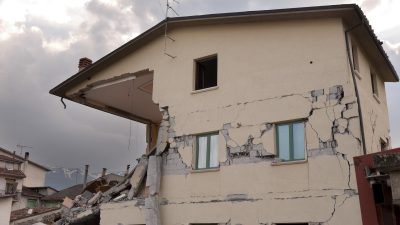The Unseen Tragedy That Exposed India’s Disaster Preparedness Failures
The 1977 Andhra Pradesh Cyclone remains a harrowing chapter in India’s history. It ravaged the state’s eastern coastline, leaving destruction in its wake. The storm struck with such ferocity that it left entire communities reeling from the damage. Despite being a region prone to cyclonic activity, the scale of this disaster took both the authorities and citizens by surprise, revealing the region’s vulnerability.
Striking in November, when the cyclone season typically begins in the Bay of Bengal, the disaster was particularly unforeseen. The immense loss of life was compounded by poor preparedness and inadequate early-warning systems, making the aftermath even more devastating.
How the 1977 Andhra Pradesh Cyclone Revealed India’s Gaps in Disaster Preparedness
The 1977 Andhra Pradesh Cyclone stands as a stark reminder of India’s insufficient disaster readiness. Though the region had long faced the threat of cyclones, the lack of effective preparation, warning systems, and response strategies was glaring. The storm arrived with minimal notice, and local authorities were unprepared to manage such a severe event.
This lack of readiness led to catastrophic consequences. As other nations had begun to develop more reliable early-warning systems, India’s failure to implement similar measures left its citizens vulnerable to the storm’s devastating force. It also highlighted the critical need for coordinated disaster management at both the local and national levels.
The Severe Impact of the 1977 Andhra Pradesh Cyclone: Thousands Dead, Countless Injured
- Death Toll: The cyclone caused a heartbreaking loss of life, with over 10,000 confirmed fatalities. Some sources suggest that the actual toll may have been even higher, as many victims were swept away by the destructive winds and flooding waters, leaving their bodies unrecovered.
- Injuries and Displacement: More than 500,000 people were left homeless, and thousands more sustained serious injuries. Communities were torn apart, and many victims were forced to live in makeshift shelters, struggling for food and medical aid.
- Economic Devastation: Beyond the human cost, the cyclone wreaked havoc on the region’s economy. Crops were destroyed, livestock lost, and the local infrastructure was obliterated. The destruction of agricultural land, in particular, had long-lasting effects on the livelihoods of the affected population.
Could the Destruction of the 1977 Andhra Pradesh Cyclone Have Been Avoided? A Missed Opportunity
While it is impossible to prevent natural events like cyclones, the extent of the damage from the 1977 Andhra Pradesh Cyclone could have been mitigated. Had there been more effective early-warning systems in place, residents might have had more time to evacuate and prepare, potentially saving countless lives.
The lack of preparation for such an extreme storm was the result of inadequate planning and failure to learn from previous cyclones. Had lessons been applied, the disaster’s human and economic toll could have been lessened considerably.
The Unseen Damage: The Long-Term Effects of the 1977 Andhra Pradesh Cyclone on Livelihoods
The cyclone left deep scars on the region’s economy, particularly within the agricultural sector. Crops such as rice, cotton, and groundnuts were destroyed by the storm’s violent winds and rain, leaving farmers with no harvest to sell or sustain their families. The storm’s aftermath left communities facing food insecurity and loss of income, and the recovery of the agricultural industry took years.
In addition to agriculture, small businesses and the fishing industry were also severely impacted. With boats destroyed, markets flooded, and homes lost, these industries faced enormous difficulties in recovering. The damage to livelihoods extended well beyond the immediate aftermath, and the road to recovery was long and challenging.
Political Fallout: The Blame Game After the 1977 Andhra Pradesh Cyclone
In the wake of the devastation, the 1977 Andhra Pradesh Cyclone sparked a wave of political criticism. Many local leaders were accused of failing to take proper precautions and not responding swiftly enough once the cyclone had struck. The slow mobilisation of relief efforts left the affected populations stranded and helpless.
Political leaders at various levels of government found themselves under intense scrutiny, with accusations of negligence and poor crisis management. As the disaster response faltered, so did public trust in the authorities, which had a lasting impact on the political landscape for years after the event.
How the 1977 Andhra Pradesh Cyclone Altered India’s Coastal Economy
The 1977 Andhra Pradesh Cyclone marked a decisive shift in the region’s economic landscape. Before the disaster, the state’s economy was largely based on agriculture, fishing, and small industries. The cyclone obliterated vast tracts of farmland, destroying crops and eroding livelihoods that depended on the land.
The economic damage was staggering, and it took years for the region to recover. Even today, the scars of that disaster are visible in the slower recovery of the local economy. While steps have been taken to improve disaster preparedness, the cyclone’s long-lasting effects on the economy continue to be felt in the area.
New Findings on the 1977 Andhra Pradesh Cyclone: What We Didn’t Know Before
Though much has been written about the 1977 Andhra Pradesh Cyclone, new insights continue to emerge, furthering our understanding of its impact. Some recent studies suggest that the cyclone might have been even more intense than initially thought. New data points to the possibility that the storm’s path and strength were not fully understood at the time, which could explain the unexpected levels of devastation.
Additionally, there are claims that the environmental effects of the cyclone were more profound than previously believed. As research continues, it’s likely that more revelations about the storm’s full scope will emerge, potentially reshaping the way we view this tragic event.
Concluding Thoughts: The Legacy of the 1977 Andhra Pradesh Cyclone and Its Enduring Impact
The 1977 Andhra Pradesh Cyclone continues to be a somber reminder of nature’s unpredictable power. The devastating loss of life and property highlighted both the inadequacies in disaster preparedness and the urgent need for improved response mechanisms. However, the cyclone’s legacy also sparked changes in policy and disaster management that have helped mitigate the effects of future storms.
Despite these advancements, the memory of the disaster endures, serving as a poignant reminder of the importance of being prepared for the next catastrophic event.
5 Short FAQs:
- What was the death toll of the 1977 Andhra Pradesh Cyclone?
The cyclone claimed over 10,000 lives, with many more injured and displaced. - What were the economic consequences of the cyclone?
The cyclone destroyed crops, infrastructure, and businesses, significantly impacting the region’s economy. - Could better preparation have reduced the damage?
Yes, with earlier warnings and better planning, many lives could have been saved, and damage minimized. - How did the government respond to the disaster?
The response was slow and insufficient, exacerbating the impact of the disaster and the suffering of the victims. - Why did the 1977 Andhra Pradesh Cyclone fade from public consciousness?
Media attention waned quickly after the initial shock, and more recent events pushed the disaster out of the spotlight.
References:
“1977 Andhra Pradesh cyclone”
“When wind and water run riot”
“Flashback – Diviseema Uppena (AP Cyclone) November 1977”https://chennairains.wordpress.com/2014/11/04/flashback-diviseema-uppena-ap-cyclone-november-1977/




